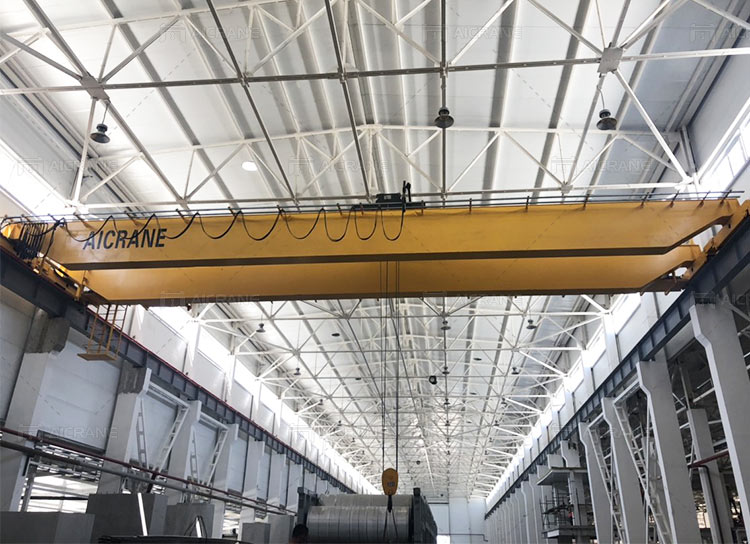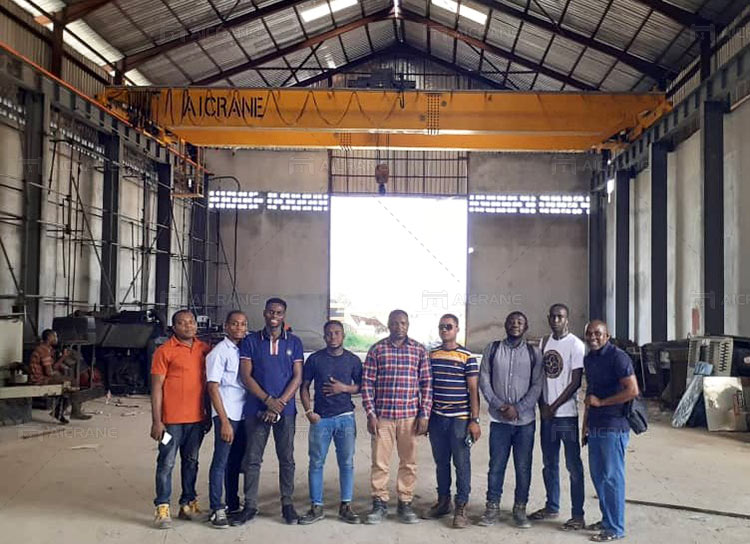Retrofitting an existing facility with a 30-ton overhead crane can significantly enhance its lifting and material handling capabilities. Whether you’re upgrading to meet increased production demands, replacing outdated equipment, or integrating more efficient technologies, the retrofit process requires careful planning and execution. Retrofitting a crane into an existing structure can present unique challenges, but with the right approach, it is possible to enhance operational efficiency while minimizing disruptions to ongoing operations.

1. Assessing the Facility and Understanding Requirements
Before initiating the retrofit process, a thorough evaluation of the existing facility is critical. This includes examining the structure, identifying potential obstacles, and ensuring the building can handle the additional load of a 30-ton overhead crane. Consider the following steps:
- Structural Assessment: A structural engineer should inspect the facility to ensure it can support the added load of the crane and its operational forces. This involves checking the integrity of the building’s foundations, columns, and beams, as well as verifying load-bearing capacities.
- Clearance and Space Requirements: Evaluate the facility’s clearance, ceiling height, and available space. A 30-ton crane requires sufficient headroom and space for the crane to move efficiently. Make sure that existing machinery, racks, or other obstacles do not interfere with crane operations.
- Operational Requirements: Understand the nature of the loads to be lifted, the frequency of lifts, and the precision required. These factors will determine whether a single or double girder overhead crane is best suited for your facility and if additional features like automated controls or anti-sway systems are necessary.
2. Choosing the Right Crane for Retrofitting
Once you’ve assessed your facility, the next step is to choose the appropriate type of overhead crane. For a 30-ton capacity, two primary options are available: single girder and double girder overhead cranes.
- Single Girder Overhead Crane: This type of crane is more suitable for facilities with lower headroom, as it typically has a lighter construction and can handle moderately heavy loads. However, a single girder crane may have limitations in terms of lifting height and span when compared to a double girder system.
- Double Girder Overhead Crane: A double girder crane, on the other hand, is ideal for heavier-duty applications and offers greater lifting height. It uses two parallel girders, allowing for more robust performance and handling of more complex operations. It is typically recommended for 30-ton cranes, as it provides enhanced stability and a higher capacity for customized features such as walkways or additional lifting tools.
Your choice will depend on your facility’s specific requirements, including available headroom and operational needs.

3. Customization and Modern Features
To maximize the effectiveness of the retrofit, consider integrating modern technologies that can improve safety and efficiency. Some key features to consider when retrofitting a 30-ton overhead crane include:
- Anti-Sway Technology: Load sway can be a safety hazard and reduce precision in material handling. By installing anti-sway technology, you can ensure smoother, more controlled lifting operations, which is especially useful for handling delicate or oversized loads.
- Remote and Automated Control Systems: Modern overhead eot cranes often come with remote control systems, allowing operators to control the crane from a safe distance. Automation can also be introduced, particularly in environments where repetitive, high-precision movements are required.
- Variable Frequency Drives (VFDs): Installing a VFD in the hoisting system and crane movements can allow for smoother acceleration and deceleration, reducing wear and tear on the equipment and improving energy efficiency.
- Safety Upgrades: Adding advanced safety features such as overload sensors, emergency stop systems, and collision avoidance systems ensures the crane operates safely within the facility. Additionally, installing monitoring systems to track operational data can help with predictive maintenance and reduce downtime.
4. Structural Modifications and Building Enhancements
In many cases, retrofitting an existing facility with a 30-ton overhead crane requires some modifications to the building. The key structural elements to consider include:
- Reinforcement of Beams and Columns: Depending on the building’s original design, the existing beams and columns may need to be reinforced or replaced to support the weight of the crane and the materials being lifted.
- Installation of Crane Runways: Overhead cranes require runways, which are the tracks or rails that the crane will travel along. These runways are typically mounted on the existing building structure but may require reinforcement or customization to ensure stability and safety.
- Electrical Modifications: The crane will need sufficient electrical power, and depending on the facility’s current setup, electrical upgrades may be necessary. This includes ensuring that the facility’s electrical supply can handle the crane’s power requirements and installing new wiring, switches, and control panels as needed.
5. Permitting and Compliance with Regulations
Retrofitting a facility with a 30-ton overhead crane often requires local permits and compliance with various regulations. Ensure you consult with relevant authorities to understand the permitting process, and adhere to national and local safety standards, such as OSHA regulations in the U.S. or CE marking in Europe.
- Load Testing and Certification: Before the crane becomes operational, it will need to undergo load testing to ensure it can handle its rated capacity safely. Ensure that all relevant tests are conducted, and obtain the necessary certifications.
- Worker Training: Once the crane is installed, it is crucial that operators and maintenance personnel receive proper training on the crane’s features, controls, and safety procedures. This minimizes the risk of accidents and ensures smooth operation. To learn more about overhead cranes or other heavy lifting equipment, visit website: https://aicraneliftingsolution.com/
6. Planning the Retrofit Process
When retrofitting a 30-ton overhead crane into an existing facility, meticulous planning is required to minimize downtime and disruptions to ongoing operations. A well-planned retrofit should include:
- Timeline Coordination: Work with contractors to establish a timeline that minimizes disruptions to your business. If possible, schedule the installation during off-peak hours or planned maintenance periods to reduce downtime.
- Staging of Equipment: Ensure that all necessary equipment, materials, and tools are staged in advance to avoid delays during the installation process. This includes pre-assembling parts of the crane where possible.
- Contingency Plans: Have contingency plans in place to handle unexpected challenges such as structural modifications, unforeseen electrical upgrades, or equipment delivery delays.
7. Final Commissioning and Handover
Once the crane has been successfully installed and tested, the final commissioning process involves verifying that all systems are operational, safe, and compliant with industry standards. It’s also an opportunity to fine-tune any controls and address any last-minute issues.
After the handover, maintain a regular inspection and maintenance schedule to ensure the crane remains in optimal condition. This will prolong its service life and help you avoid costly repairs or breakdowns.
Conclusion
Retrofitting an existing facility with a 30-ton overhead crane is a complex project that requires careful planning, from assessing the structural integrity of the building to selecting the right crane and ensuring compliance with safety standards. By following a structured approach, businesses can enhance their lifting capabilities and improve overall operational efficiency. With the right crane and proper integration, a retrofitted facility can significantly boost productivity and meet modern material handling demands.